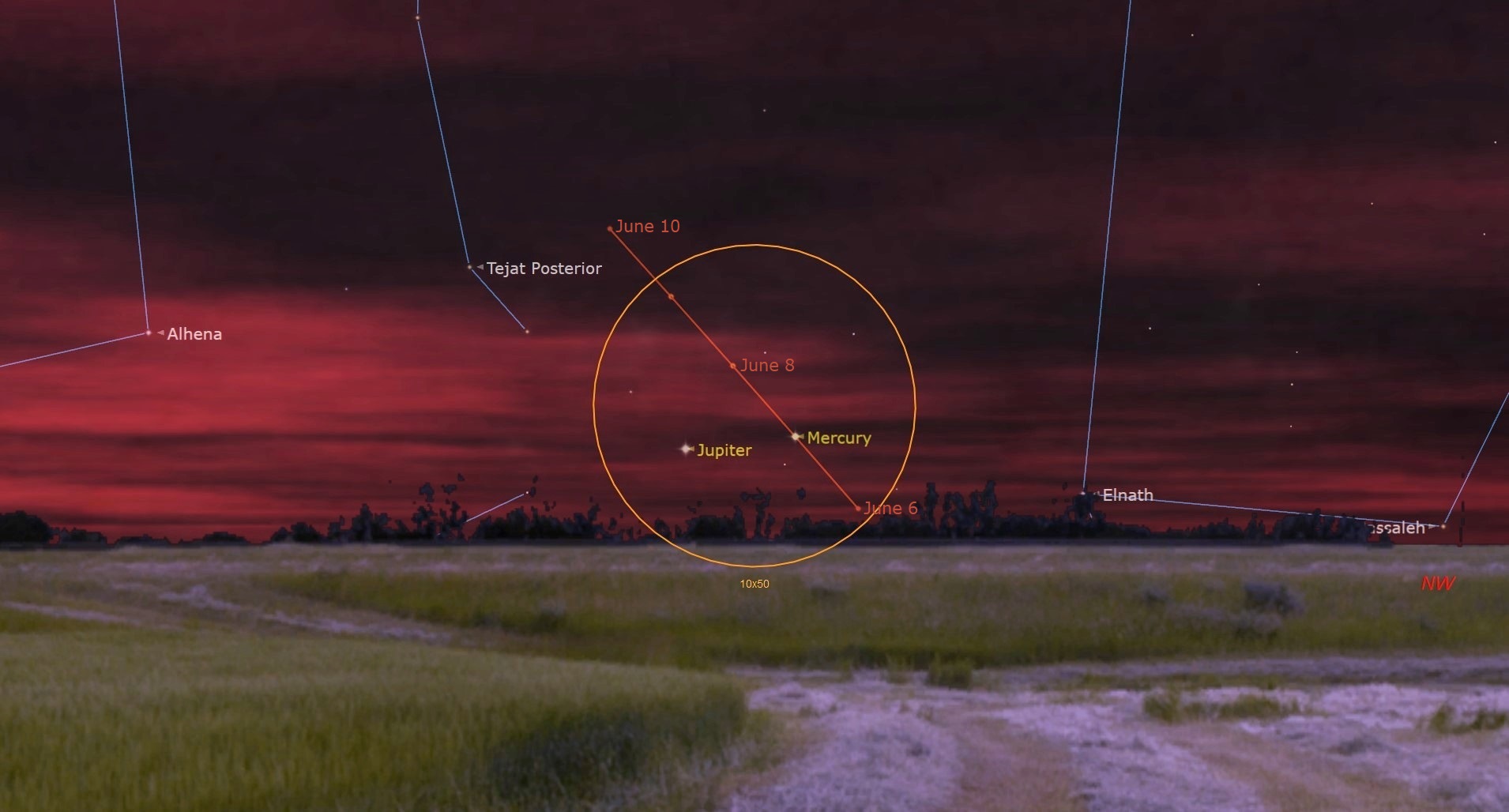Spring Skywatching: Spot Canis Major, the Big Cosmic Dog

Look southward just after the sky gets dark at this time of year, and you will be sure to see Sirius shining brightly. This is the brightest star in the sky, and marks the eye of the constellation called Canis Major, Latin for "the Large Dog."
If Sirius is the Dog’s eye, the constellation's nose is marked by the star Mirzam. just to its right. (Observers in the Southern Hemisphere should reverse the directions given here.) Below Sirius is a triangle of stars marking the Dog’s hindquarters, Wesen, Aludra and Adhara,
If you have a telescope, be sure to check out Adhara. This is a double star, consisting of a bright blue-white star and a much fainter companion, which may be hard to see because of the luminosity of the primary star. Adhara is currently 430 light-years away, but 4.7 million years ago it was much closer to the sun — only 34 light-years away and the most luminous star in the sky at the time, rivaling Venus in brightness. [March 2015 Skywatching: Planets and a Solar Eclipse (Video)]
Just to the east (left) of the triangle at the bottom of Canis Major is the 8th-magnitude star VY Canis Majoris. Although not very bright, this is one the largest stars in the sky. It is 1,400 times wider than the sun, but its mass is less than 20 times that of our star. VY Canis Majoris is a very cool red star, with a surface temperature of about 5,820 degrees Fahrenheit (3,216 degrees Celsius) — more than 4,000 degrees F cooler than the sun.
Canis Major, and its neighbor Puppis to the east, contain many interesting open clusters, as this is one of the richest parts of the Milky Way. My spell check keeps changing "Puppis" into "Puppies," which seems appropriate near a large dog, but in fact "Puppis" refers to the poop deck of the ship Argo Navis. This was once a large constellation, later broken up into a number of smaller constellations representing the components of the ship: Puppis (the Poop Deck), Vela (the Sail), Pyxis (the Compass), and Carina (the Keel).
The brightest star cluster in Canis Major is number 41 in Messier’s catalog, sometimes called the Little Beehive Cluster. This cluster is a fine sight in binoculars or a small telescope.
Across the border in the constellation Puppis, there are three more clusters from Messier’s catalog, numbers 46, 47, and 93. All of them are worth a look.
Get the Space.com Newsletter
Breaking space news, the latest updates on rocket launches, skywatching events and more!
There are also many interesting nebulae in Canis Major and Puppis. The most famous of these is NGC 2359, also known as "Thor’s Helmet" or the more prosaic "Duck Nebula." This nebula is best observed with at least an 8-inch (20 centimeters) telescope; a nebula filter is very helpful in bringing out its shape. Look also for NGC 2440, a small, bright planetary nebula, most easily seen with a nebula filter.
As you can see, there is a lot more to Canis Major than Sirius.
This article was provided to SPACE.com by Simulation Curriculum, the leader in space science curriculum solutions and the makers of Starry Night and SkySafari. Follow Starry Night on Twitter @StarryNightEdu. Follow us @Spacedotcom, Facebook and Google+. Original article on Space.com.
Join our Space Forums to keep talking space on the latest missions, night sky and more! And if you have a news tip, correction or comment, let us know at: community@space.com.

Geoff Gaherty was Space.com's Night Sky columnist and in partnership with Starry Night software and a dedicated amateur astronomer who sought to share the wonders of the night sky with the world. Based in Canada, Geoff studied mathematics and physics at McGill University and earned a Ph.D. in anthropology from the University of Toronto, all while pursuing a passion for the night sky and serving as an astronomy communicator. He credited a partial solar eclipse observed in 1946 (at age 5) and his 1957 sighting of the Comet Arend-Roland as a teenager for sparking his interest in amateur astronomy. In 2008, Geoff won the Chant Medal from the Royal Astronomical Society of Canada, an award given to a Canadian amateur astronomer in recognition of their lifetime achievements. Sadly, Geoff passed away July 7, 2016 due to complications from a kidney transplant, but his legacy continues at Starry Night.

